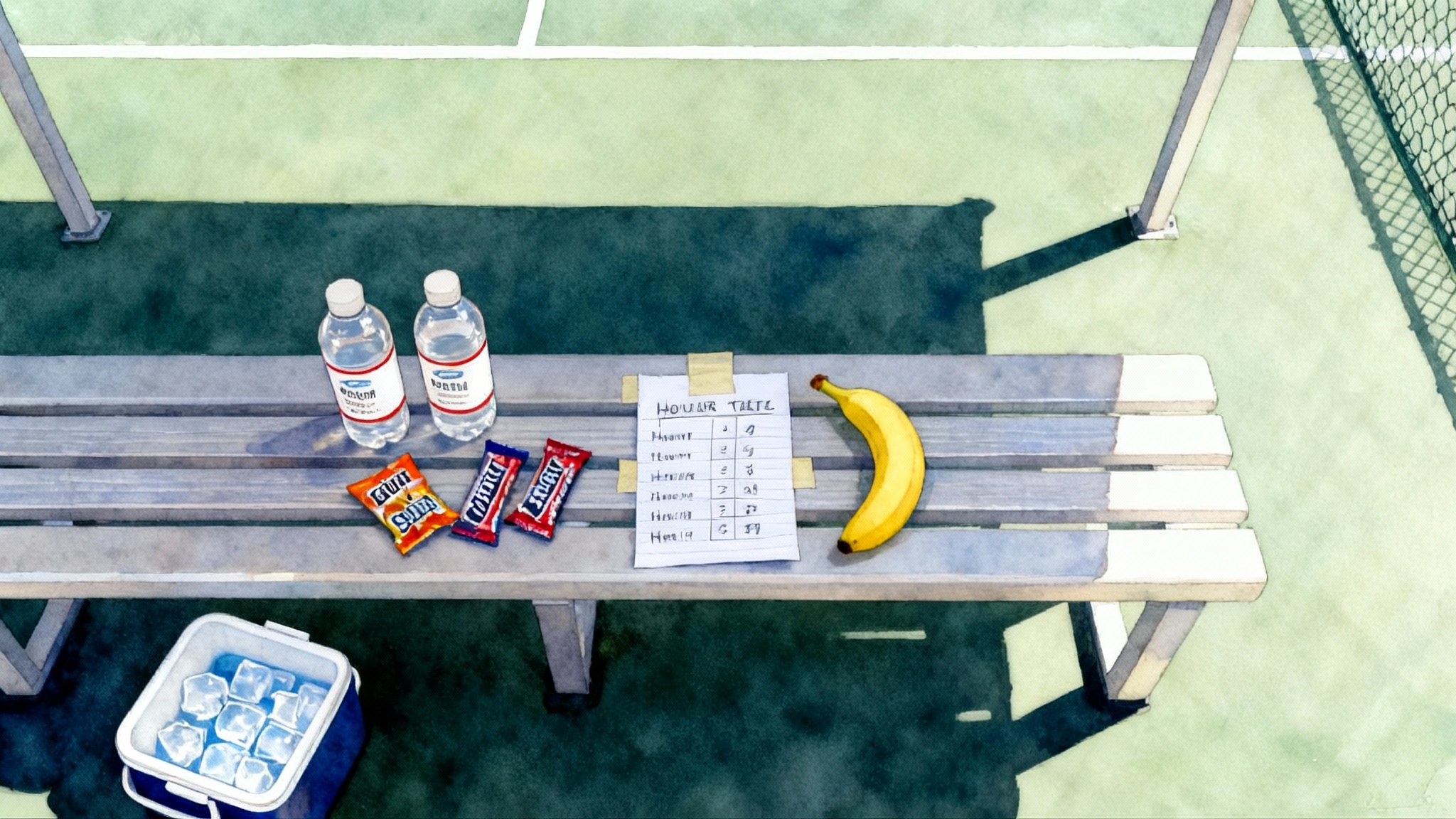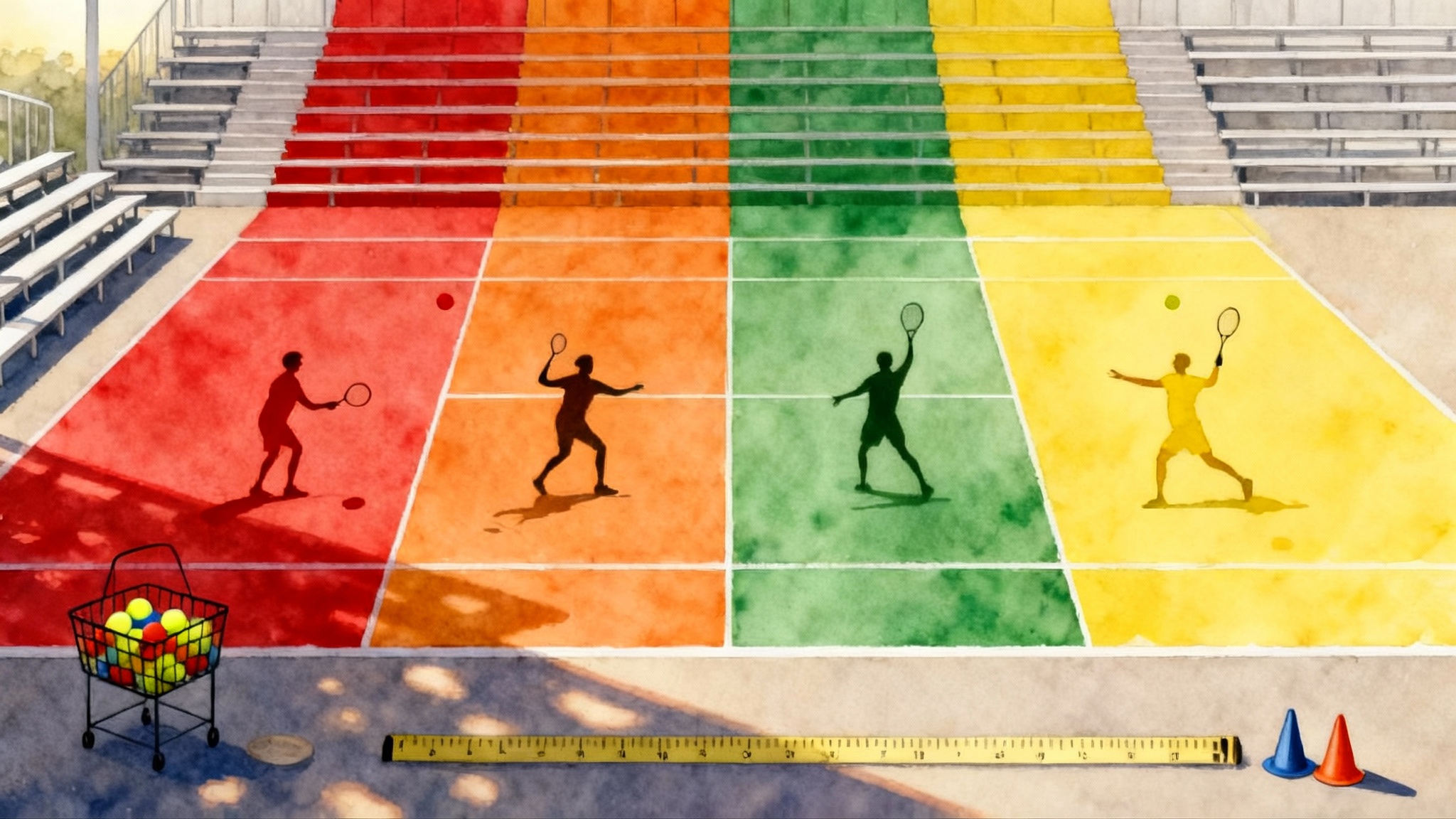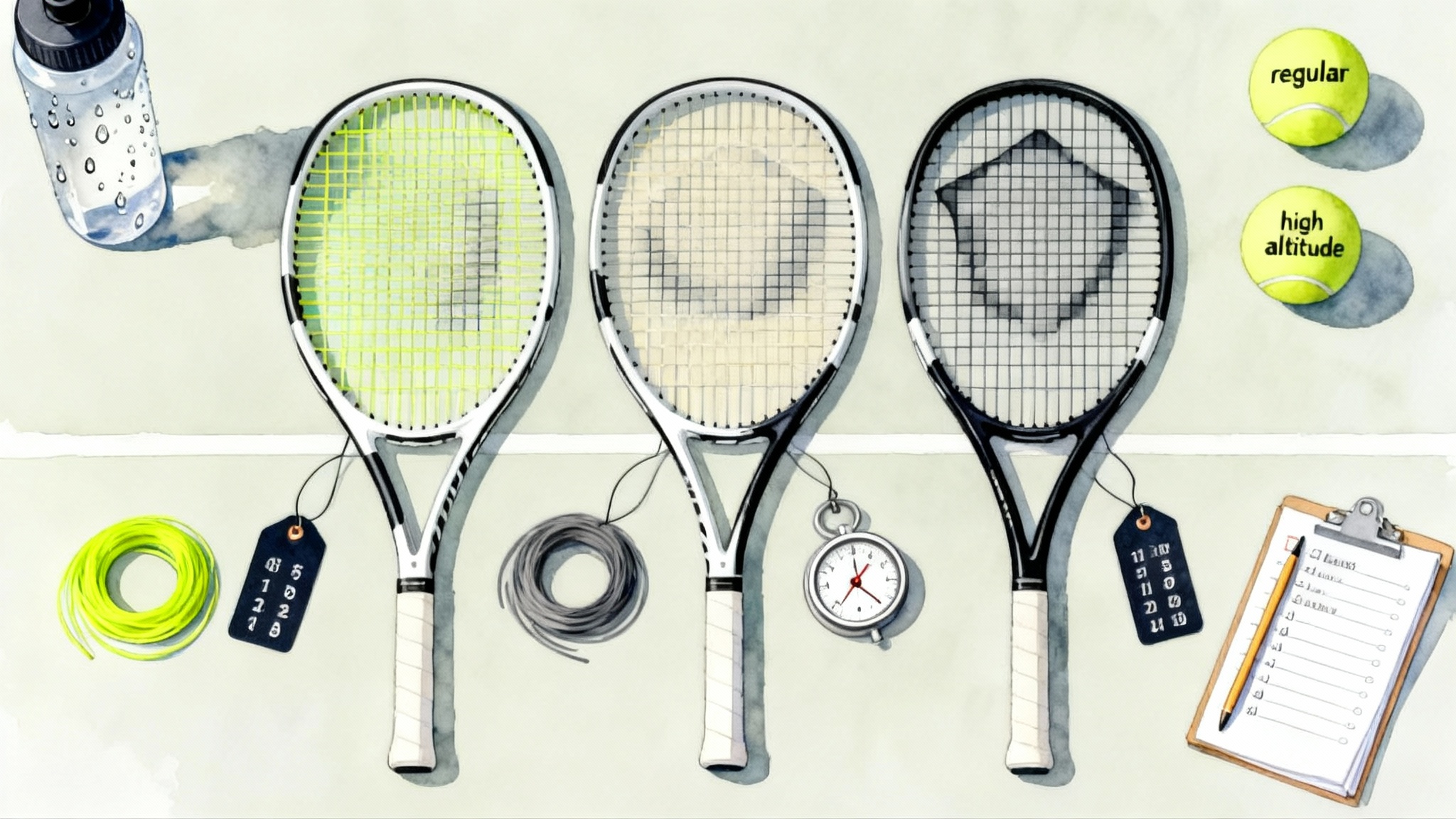College Tennis Recruiting 2025–2026: Emails, Video, Visits
A practical, month‑by‑month roadmap for juniors and parents. Learn when coaches can contact you, how to email them, how to film a standout phone‑shot highlight reel, the difference between unofficial and official visits, and what scholarships look like.

Why a 2025-2026 roadmap matters
Junior tennis recruiting rewards prepared families. Coaches move quickly once they are allowed to talk, international talent competes for the same roster spots, and video is often your first impression. This guide gives you a clear plan for what to do, when to do it, and how to do it well.
- Who this is for: high school players and parents in the United States targeting roster spots and scholarships for fall 2026 enrollment.
- What you will get: coach-contact templates, a simple highlight-reel recipe, visit rules explained, realistic scholarship expectations by division, and a month-by-month checklist from October 2025 through July 2026.
If you want hands-on help, our team at TennisAcademy.app offers one-on-one recruiting support, video editing, and email reviews.
The rules at a glance
As of October 10, 2025, these are the key NCAA Division I guidelines for tennis and most other sports: coaches may communicate with prospects beginning June 15 after the sophomore year, and unofficial and official visits that involve the athletic department may begin August 1 before the junior year. See the NCAA update on curbing early recruiting with the June 15 and August 1 dates. NCAA DI early recruiting rules.
Official visits: prospects may take an unlimited number of official visits, limited to one per school, and schools may cover reasonable costs for the prospect and up to two family members. Visits may last up to two nights. Effective July 1, 2023. NCAA official visit changes.
Notes by division
- Division II: coaches may communicate with prospects at any time; however, in-person off-campus contact and official visits generally may begin no earlier than June 15 after the sophomore year. Always confirm specifics with each school’s compliance office.
- Division III and NAIA: more flexible contact rules. You can email any coach at any time; they may be restricted in how they can respond until their allowed date. Confirm current rules with a school’s compliance office.
Grade-banded roadmap
Freshman year (9th grade)
Goal: establish a foundation that makes outreach credible later.
- Build a basic player profile: name, grad year, height, dominant hand, UTR, best wins, academic interests, GPA, test plan, contact info. Keep it to one page.
- Start tracking results: register with UTR Sports and keep results current. Coaches scan UTR first to calibrate level. For smart event choices, see how to plan tournaments without burnout.
- Film raw practice clips twice a semester: serve basket, crosscourt forehands and backhands, approach and volley patterns, and ten points of live play from the back fence.
- Follow 10 programs on your radar. Watch dual-match live streams to understand team culture and lineup depth.
Sophomore year (10th grade)
Goal: be findable and ready before June 15.
- Raise your UTR with targeted scheduling. Mix local USTA, high-rep weekends, and one stretch event per quarter where you might split results but gain rating upside.
- Academic prep: keep transcripts clean, identify two junior-year courses that show rigor. International recruits often win tie-breaks with grades.
- Assemble version 1.0 of your highlight reel. Even a 90-second cut is enough now. You will upgrade it mid-junior year.
- Shortlist 25 programs across Division I, Division II, Division III, NAIA, and junior college. Sort by tennis fit, academics, and cost.
- Week of June 15: send your first coach emails to your top 12 programs with your video, schedule, and why you fit. Use the template below.
Junior year (11th grade)
Goal: convert interest into real conversations and visits.
- August to October: schedule unofficial visits to your top schools, see a practice, meet players, and ask prepared questions.
- Update video by October with full-point footage and clear opponent-level notes.
- Keep coaches warm: send one concise update each month that includes new results, planned events, and an academic note.
- If invited, plan official visits that fit your competition schedule. Prepare your questions and bring a parent or guardian.
- Register with the NCAA Eligibility Center and send transcripts when prompted. Ask coaches about academic pre-reads if applicable.
- If doubles is a path to early lineup time, study our college-ready doubles playbook.
Senior year (12th grade)
Goal: finalize fit, finances, and signing logistics.
- Sharpen your list by September based on offers, academic fit, and role on the team.
- Compare packages: athletic aid plus academic and need-based aid. Ask each coach for a bottom-line cost of attendance number.
- Keep competing and send quick updates. Coaches value continued improvement as much as past wins.
- Visit again if you need clarity. One official per school is allowed. Use it if a new head coach arrives or you did not get what you needed on an unofficial.
For broader program-evaluation criteria and training environments, see our academy guide to ratios and fit.
Coach outreach that gets replies
Think like a coach with an inbox full of similar emails. Your message must be short, specific, and easy to assess in under 60 seconds.
Subject lines that pass the scan test
- 2026 two-hand backhand, UTR 9.2, fall schedule attached
- Lefty 2026, UTR 10.4, 3.8 GPA, 2-minute reel inside
- 2026 recruit, UTR 8.7, 6-2 serve sample, visiting Oct 12
First-contact email template
Copy, personalize, and send from the athlete’s own email account.
Coach [Last Name],
My name is [First Last], class of 2026 at [High School, City, State]. I am a [right/left]-handed [singles/doubles-balanced] player with a current UTR of [X.X].
Why your program: [One sentence tied to your style or academics, for example, "Your team’s high first-serve percentage and aggressive doubles align with how I play," or "I am interested in [Major] and your [Program/Lab] caught my eye."]
Quick facts:
- Height/weight: [e.g., 5'10", 150 lb]; dominant hand: [Right/Left]; backhand: [One/Two-handed]
- Best recent wins: [Name, UTR], [Name, UTR]
- Academics: [GPA], [AP/Honors], [intended major]
Video: [Unlisted link]
Fall schedule: [Attach PDF or paste dates and events]
If you are open, I would value a short call after August 1 to learn what you look for in a 2026 [men’s/women’s] player.
Thank you for your time,
[First Last]
[Mobile number]
[City, State]
Follow-up rhythm
- Send one update every 30 to 45 days if there is something new: rating jump, quality win, fresh video, or confirmed campus visit date.
- If a coach replies with questionnaires or camp info before they can speak directly, complete them and keep sending brief, value-adding updates.
A smartphone highlight reel coaches actually watch
Treat your reel like a product demo. Coaches want to see ball weight, decision making, and movement, not cinematic flair.
Recording settings
- Phone: any recent iPhone or Android camera works.
- Resolution and frame rate: 1080p at 60 frames per second is ideal; 4K is fine if your device handles it.
- Angle: baseline center, three to four feet above the fence. Use a fence mount or tall tripod. A simple phone clamp works.
- Audio: leave it on. Ball sound helps coaches gauge contact.
Shot list and structure
Length: 2 to 3 minutes. Lead with strengths in the first 30 seconds.
- Serves: 6 first serves to both boxes, 6 second serves with kick or slice. Overlay mph only if measured accurately.
- Returns: 8 returns, mix deuce and ad, against live serves.
- Baseline patterns: 8 forehand patterns, 8 backhand patterns, including change-of-direction balls.
- Transition and net: 6 approach-volley-overhead sequences.
- Points: 6 to 8 full points vs known-level opponents. Add small corner captions like “Opponent UTR 9.5.”
Editing tips
- Keep cuts long enough to read ball flight. Avoid slow-mo except for one serve clip.
- Add a title card with your name, grad year, UTR, and contact info.
- Host as an unlisted YouTube or Vimeo link, or a cloud folder with a one-click stream. Name the file “Lastname_First_2026_2min.mp4.”
Unofficial vs official visits, made simple
- Unofficial visit: you pay your way. You can meet the coaching staff, tour facilities, and sit in on classes. In Division I, athletics staff involvement can begin August 1 before junior year.
- Official visit: the school pays for permissible items like transportation, meals, and reasonable entertainment during a visit that may last up to two nights. As of July 1, 2023, you can take an unlimited number of official visits, limited to one per school. A second visit is allowed if there is a head coaching change.
How to request a visit
Subject: 2026 recruit visiting on [Date]
Coach [Last Name],
I will be in [City] on [Date range] and would love to see campus and meet the team if calendars allow. My updated 2-minute reel and fall schedule are below.
If an unofficial visit makes sense, could I:
- Watch practice for 30 minutes
- Meet you for 15 minutes
- Tour facilities with a player or staff member
Thank you for considering,
[First Last]
Questions to bring
- Where would I project in your lineup in year one if development goes to plan?
- What are the three habits your best players share?
- How many players graduate in their intended major on time?
- What support exists for summer tournaments and individual events?
- How do walk-ons earn travel spots?
Scholarship realities across divisions
Tennis is an equivalency sport in both the NCAA and the NAIA. Coaches split scholarship budgets across the roster rather than awarding a few full rides.
- Division I: historically, men operate with 4.5 equivalency scholarships and women with 8. Full rides happen, but most packages blend partial athletic aid plus academic and need-based aid.
- Division II: historically, men operate with 4.5 and women with 6. Academic stacking often matters more here than the athletic slice alone.
- Division III: no athletic scholarships. Merit and need-based aid can be strong, and coaches recruit actively.
- NAIA: programs work under sport-specific equivalency limits and can stack institutional aid. Always ask the coach what a fully funded program means on their campus.
- Junior college: many NJCAA teams can be very generous. Two strong junior college years can springboard you to a better four-year fit.
Two practical implications
- Ask for the entire package in writing: athletic, academic, and need-based numbers, plus estimated out-of-pocket cost of attendance. Compare totals, not headlines.
- Your grades are a lever. A higher GPA can unlock academic money that frees a coach to stretch limited tennis dollars.
Month-by-month checklist: October 2025 to July 2026
Use this as your operating calendar. Adjust dates by a week if travel or school exams conflict.
October 2025
- Finalize a 25-school list across levels. Tag 12 as top targets.
- Film a new two-minute highlight reel with at least six full points.
- Email your top 12 with the new video and your event schedule.
- Schedule two unofficial visits for late October or early November.
November 2025
- Play one event where likely opponents are a half-point above your UTR.
- Send a short results update to interested coaches.
- On visits, ask to watch a practice and sit with the team at lunch.
December 2025
- Academic check: request unofficial transcript and verify core courses.
- Trim your list based on feedback. Add two stretch programs and two safeties.
- Record serves and returns session clips for coaches who ask for specifics.
January 2026
- Confirm spring competition schedule and share it as a one-page PDF.
- Register with the NCAA Eligibility Center if you have not already.
- Ask top targets about spring visit windows and match days to attend.
February 2026
- Keep a simple match log: opponent name, rating, score, one learning point.
- Send a six-line monthly update with one new clip or key win.
- Meet your school counselor about financial aid timelines.
March 2026
- Visit two campuses during spring break if possible.
- Ask coaches what skills would most improve your chance to travel in year one.
- Start a shared spreadsheet for offers, costs, and renewal terms.
April 2026
- Update your reel with best spring points. Keep it under three minutes.
- Request calls with coaches who are active with you to discuss roster needs.
- If you sense silence, politely ask whether to keep them on your list.
May 2026
- If invited, plan official visits for early summer that do not clash with key tournaments.
- Confirm summer events and share them with all engaged coaches.
- Ask for academic pre-reads where applicable.
June 2026
- Take one official visit to your top school if offered. Prepare written questions.
- Compare financial packages apples to apples: total cost out of pocket.
- If undecided, schedule one more campus visit to break the tie.
July 2026
- Play your best events with a clear plan. Send a concise update after each event.
- If committed, thank all other coaches who invested time. Keep training; you want to arrive ready in August 2026.
- Share a final summer recap and conditioning plan with your future coach.
Common pitfalls and how to avoid them
- Long, unfocused emails: keep to 200 words, lead with why you fit, attach a schedule.
- Vertical videos: shoot landscape from the back fence so coaches can read court geometry.
- Over-edited reels: avoid music that drowns ball sound, excessive cuts, or hype graphics.
- One-school tunnel vision: build a balanced list across divisions so you have leverage and fit options.
- Ignoring academics: a half-letter grade bump can be worth thousands of dollars per year.
Your next three steps
- Send your first or next coach email today using the template above.
- Film your two-minute reel this weekend using the shot list. Then polish the edit or ask a trusted coach for feedback.
- Book two campus visits on dates that let you see a practice and talk to players.
Closing thought
Recruiting rewards clarity and cadence. Clarity in who you are as a player and student, cadence in short, steady updates that make a coach’s job easier. Follow the calendar, keep your video current, ask smart questions on visits, and measure progress in months, not days. Do that, and you give every coach an easy answer when they ask themselves the only question that matters: can this player help us win and grow our team culture starting next fall?






